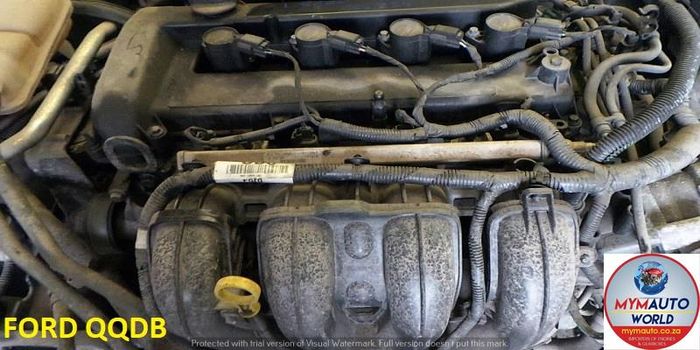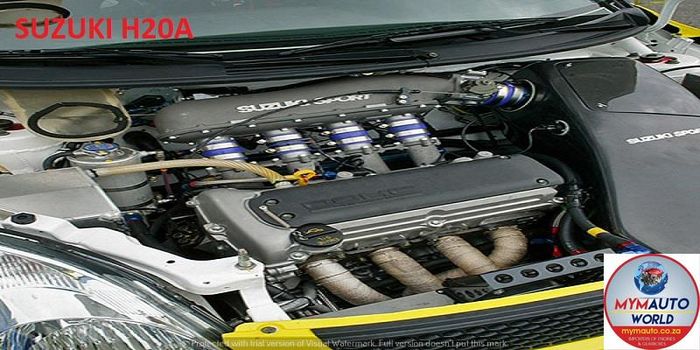Checking Out the most up to date Technological Innovations in Import Engines and Exactly How They Improve Driving Experience
In the world of automotive design, the landscape of import engines is undergoing a profound makeover driven by advanced technological developments. From the advancement of turbocharged engines to the integration of crossbreed technology, the most up to date developments are reinventing the driving experience in means previously unimaginable. As import manufacturers press the boundaries of performance and performance through boosted fuel shot systems and advanced engine management solutions, the inquiry emerges: Exactly how do these improvements absolutely influence the way we communicate with our vehicles when traveling?

Advancement of Turbocharged Engines
In the vehicle sector, the development of turbocharged engines has actually significantly changed the landscape of performance and performance. Turbocharging, as soon as primarily seen in high-performance sports autos, has now become a mainstream technology taken on by a variety of cars, from portable hatchbacks to luxury sedans. The basic concept behind a turbocharged engine is straightforward yet efficient - forcibly even more air into the burning chamber, it allows even more fuel to be shed, leading to increased power outcome.
Among the crucial benefits of turbocharged engines is their capacity to provide even more power from smaller sized, much more fuel-efficient engines. This downsizing fad has resulted in a decrease in discharges without endangering efficiency, making turbocharging an eye-catching option for automakers striving to meet stringent ecological laws. Moreover, turbocharged engines offer boosted torque at reduced RPMs, giving motorists with an extra receptive and vibrant driving experience - import engines.
As modern technology remains to development, we can expect additional developments in turbocharging, causing even higher levels of performance and effectiveness in the auto sector.
Developments in Gas Shot Solutions
With the constant development of auto modern technology, significant advancements have been made in gas shot systems. Modern fuel injection systems have actually evolved to deliver gas much more successfully and precisely right into the engine cyndrical tubes, boosting overall engine performance and gas efficiency. One of the key innovations in gas injection systems is the shift from conventional port fuel shot (PFI) to advanced direct gas injection (DFI) innovation. DFI systems infuse fuel directly into the combustion chamber at high stress, leading to much better fuel atomization and combustion, resulting in boosted power outcome and decreased exhausts.
Moreover, the assimilation of electronic control devices (ECUs) and sensors in gas shot systems has actually permitted for real-time modifications to sustain delivery based on various variables such as engine load, temperature, and driving conditions. Additionally, developments in gas injector design, materials, and spray patterns have added to cleaner burning and smoother engine procedure.
Integration of Hybrid Innovation
The evolution of gas injection systems in the direction of better effectiveness and performance has actually established the stage for the seamless integration of hybrid innovation into modern engines. Crossbreed innovation integrates the usage of conventional interior burning engines with electric propulsion systems, offering boosted gas performance and decreased discharges. By integrating electrical motors and batteries right into the powertrain, crossbreed engines can supplement the internal combustion engine throughout velocity or low-speed driving, therefore enhancing total efficiency.

Enhanced Engine Monitoring Systems
What are the crucial developments in engine administration systems that are improving the performance and efficiency of modern engines? Engine management systems have actually undertaken substantial advancements to maximize engine efficiency and effectiveness. One essential technology is the integration of sophisticated sensing units that continually keep track of different parameters such as engine temperature level, air-fuel proportion, and exhaust emissions. These sensing units supply real-time information to the engine control device (ECU), enabling specific adjustments to be made to enhance burning processes and fuel efficiency.
Additionally, modern engine administration systems utilize sophisticated algorithms and artificial intelligence to assess the data accumulated by sensing units and make dynamic changes to aspects such as ignition timing, gas injection, and turbocharger increase stress. This level of precision and versatility cause improved engine responsiveness, increased power result, and lowered gas intake.
Additionally, engine administration systems now feature advanced analysis capacities that can identify and deal with problems such as misfires, sensor breakdowns, and gas system abnormalities in real-time, thereby improving total engine dependability and durability. These developments in engine administration systems play a vital duty in improving the driving experience by delivering optimum efficiency, gas performance, and reliability.
Effect of Lightweight Materials
Incorporating light-weight products in engine manufacturing from this source has actually changed the vehicle sector's method to enhancing fuel efficiency and performance. The use of materials such as carbon titanium, aluminum, and fiber has actually considerably decreased the total weight of engines, bring about boosted power-to-weight ratios and increased fuel economic climate. These lightweight products offer a greater strength-to-weight ratio compared to conventional materials like steel, permitting for better durability without compromising efficiency.
Among the crucial benefits of utilizing light-weight products in engine construction is the decrease of inertia, resulting in quicker engine feedback times and enhanced general lorry dexterity. In addition, the lighter weight contributes to lower power usage, making lorries much more eco pleasant by lowering exhausts.
In addition, the execution of lightweight materials in engine components such as pistons, connecting poles, and crankshafts has check here actually enabled designers to press the borders of efficiency without compromising dependability (import engines). This advancement has led the method for extra efficient and effective engines that supply a remarkable driving experience while meeting rigorous discharges criteria
Verdict
Finally, the most up to date technological developments in import engines have actually dramatically enhanced the driving experience. From the advancement of turbocharged engines to developments in fuel injection systems, assimilation of hybrid technology, enhanced engine monitoring systems, and making use of light-weight products, these developments have actually collectively boosted performance, fuel performance, and total driving dynamics. As innovation continues to development, we can expect a lot more amazing advancements in the future of import engines.
Modern gas shot systems have actually evolved to deliver fuel more efficiently and specifically into the engine cylinders, improving overall engine efficiency and gas performance - import engines. By integrating electric motors and batteries right into the powertrain, hybrid engines can supplement the internal burning engine during velocity or low-speed driving, consequently boosting total performance
What are the crucial developments in engine administration systems that are enhancing the performance and effectiveness of contemporary engines? Engine management systems have undergone considerable advancements to maximize engine efficiency and performance. From the advancement of turbocharged engines to advancements in fuel shot systems, assimilation of hybrid innovation, boosted engine monitoring systems, and the usage of light-weight materials, these technologies have wikipedia reference jointly enhanced performance, fuel effectiveness, and general driving characteristics.